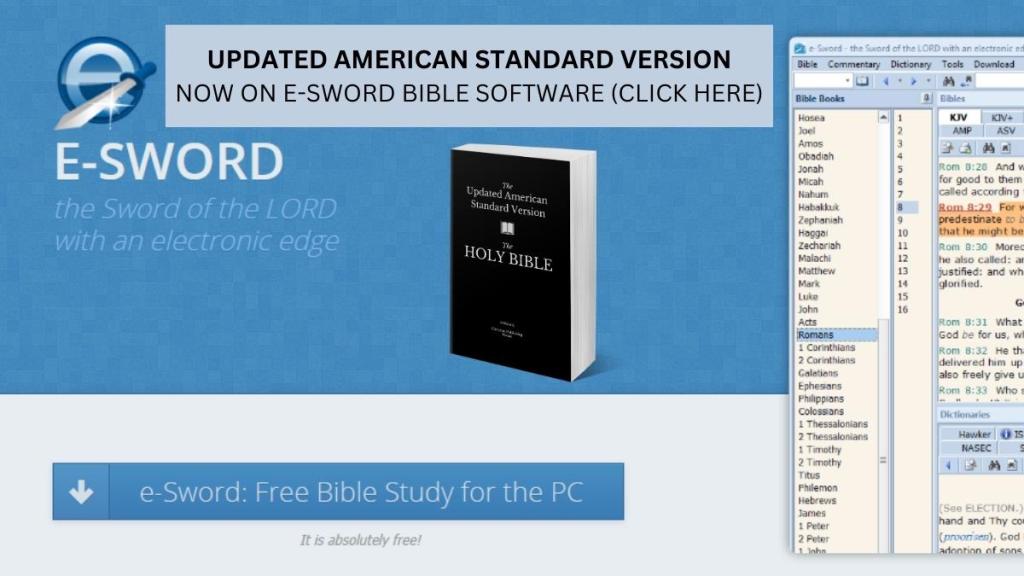Please Help Us Keep These Thousands of Blog Posts Growing and Free for All
Toledot (“the account of”) occurs throughout Genesis and when taken as a heading introduces a new section each time except for its use in Genesis 36:9 (Gen. 2:4; 5:1; 6:9; 10:1; 11:10,27; 25:12,19; 36:1; 37:2). The person mentioned after toledot is not usually the focus of the section but rather the person who originated what follows.
R. K. Harrison follows P. J. Wiseman and argues for this word to be taken as a colophon that offers a summary conclusion to the preceding section (Harrison, 548). While this approach is conceivable, it seems better to take toledot as a heading for what follows. This approach is based on the fact that the use of toledot in Genesis as a heading is the only consistent system that works and the fact that in every other place in the Scriptures where toledot is used it clearly refers to that which precedes. This will be the approach followed in this commentary.
By Kenneth O Gangel; Stephen J. Bramer



 The Hebrew Word Toledot
The Hebrew Word Toledot
The tôlĕdôt formula and the sources used in composing Genesis
In 1936 Wiseman suggested that the key to uncovering the sources for Genesis lay in the Hebrew word tôlĕdôt, meaning generations, family records or descendants. Ten sections of Genesis are marked with the formula [and] these are the family records of (2:4; 6:9; 10:1; 11:10, 27; 25:12, 19; 36:1, 9; 37:2). Another begins, This is the book of the descendants of (5:1). Wiseman posited that the tôlĕdôt formula represented the end of a tablet written or commissioned by the man whose name it contained. This corresponded to the common practice in the Ancient Near East of ending a text with a note that recorded the name of the scribe who had written it and the time when the tablet was composed. Thus, according to Wiseman, the first source tablet ended at 5:1 with these are the generations [or family records] of Adam.
The major drawback of Wiseman’s proposal is that the text that follows each of these tôlĕdôt formulas more naturally belongs with the notice than does the material that precedes it. Thus, at 25:19, These are the family records of Isaac is followed by accounts about his sons Esau and Jacob (25:20–35:29). At 36:1, These are the family records of Esau is followed by an account concerning Esau’s descendants (36:2–8). Then at 36:9, These are the family records of Esau, father of the Edomites in the mountains of Seir is followed by a genealogy of Esau’s descendants and a record of Edomite kings (36:10–43). For this reason and others, most scholars have rejected Wiseman’s conjecture. Nevertheless, Wiseman correctly drew attention to what appears to be an organizing principle of Genesis: the tôlĕdôt formula.[1]
UASV Footnote on Genesis 2:4
Or the generation of … The Greek word genesis is used in the Greek Septuagint (LXX) to render the Hebrew term tohledhohth, which generally has a similar meaning, denoting the history in numerous places within the book of Genesis, which is usually rendered “generations” in the book of Genesis (ASV, ESV, LEB, NASB) or “history.” It is used as a heading to set up the historical account that is to follow. – Gen. 2:4; 5:1; 6:9; 10:1; 11:10, 27; 25:12, 19; 36:1, 9; 37:2.
[1] Andrew E. Steinmann, Genesis: An Introduction and Commentary, ed. David G. Firth, vol. 1, The Tyndale Commentary Series (London: Inter-Varsity Press, 2019), 15–16.
SCROLL THROUGH DIFFERENT CATEGORIES BELOW
BIBLE TRANSLATION AND TEXTUAL CRITICISM
BIBLICAL STUDIES / INTERPRETATION
EARLY CHRISTIANITY
CHRISTIAN APOLOGETIC EVANGELISM
TECHNOLOGY
CHRISTIAN THEOLOGY
TEENS-YOUTH-ADOLESCENCE-JUVENILE
CHRISTIAN LIVING
CHRISTIAN DEVOTIONALS
CHURCH HEALTH, GROWTH, AND HISTORY
Apocalyptic-Eschatology [End Times]
CHRISTIAN FICTION
Like this:
Like Loading...







 The Hebrew Word Toledot
The Hebrew Word Toledot










































































































































































































